Behind the Build: CERN's WordPress Migration
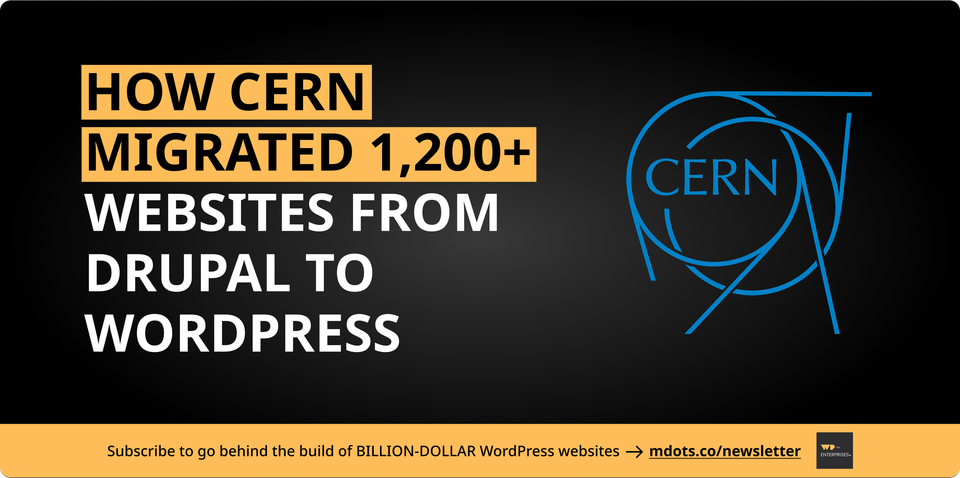
Welcome to WP for ENTERPRISES, where we go behind the scenes of BILLION-DOLLAR WordPress websites.
In this issue, you'll discover:
- Why the birthplace of the World Wide Web needed a digital reset.
- The problems with CERN's Drupal infrastructure.
- Why CERN chose WordPress over 100+ CMS options.
- 4 strategies that powered their massive migration.
- Surprising results and hidden gems from the migration.
Let's be real, there are "important" websites... and then there's CERN.
This is the European Organization for Nuclear Research. The place where the World Wide Web was invented in 1989. The home of the Large Hadron Collider. Where thousands of scientists from around the globe collaborate on experiments that push the boundaries of physics.
And they're in the process of migrating over 1,200 websites from Drupal to WordPress.
Yep, the organization that literally created the web is now betting on WordPress to power its entire digital presence.
But this wasn't always the case.
For years, CERN ran on Drupal. A solid choice at the time. But like many enterprise CMS setups, it came with baggage.
Let's unpack how this transformation happened—and what your enterprise can learn from it.
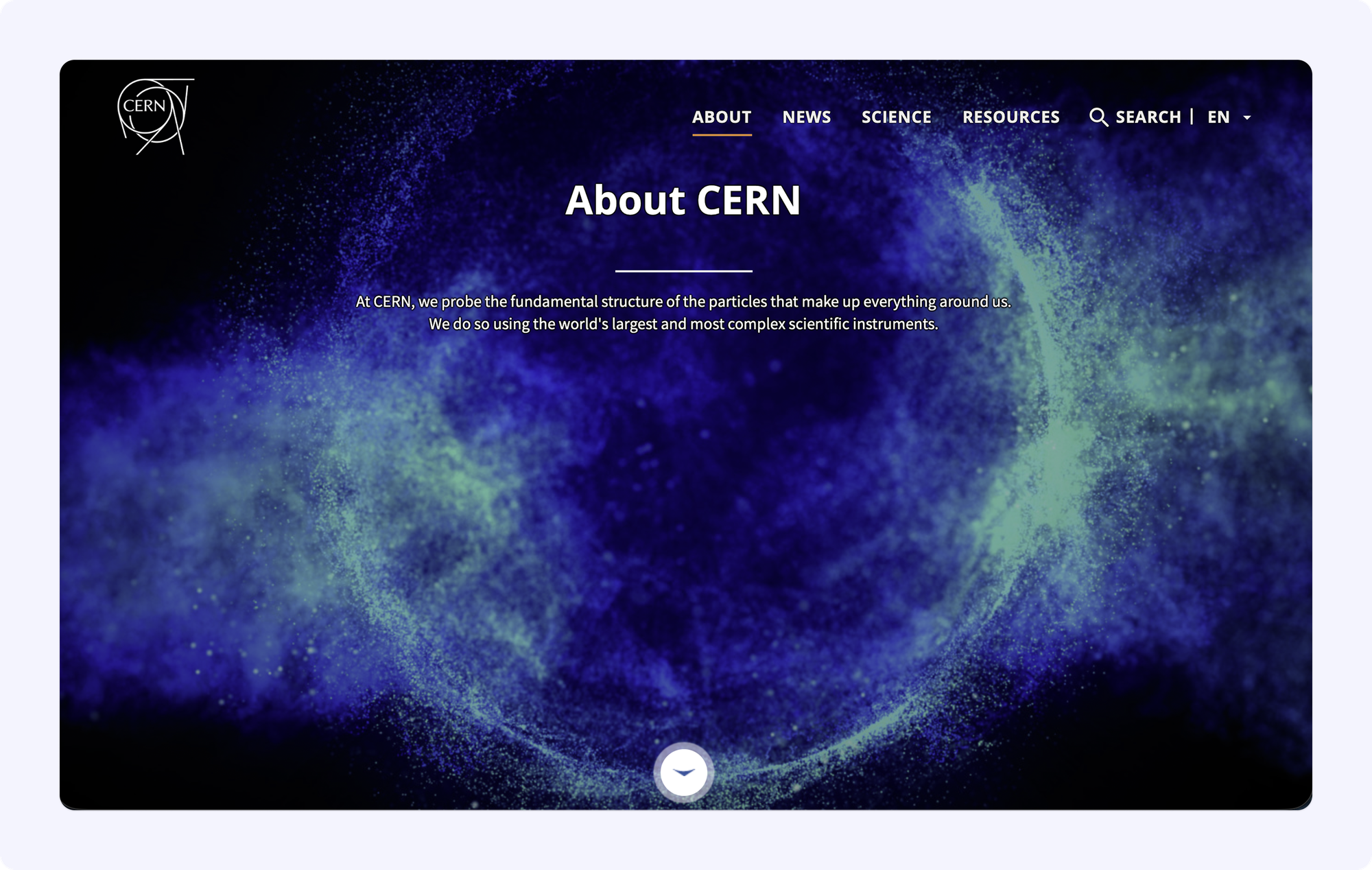
WHAT WAS WRONG WITH DRUPAL?
Imagine you're a physicist at CERN. You've just made a breakthrough discovery that could change our understanding of particle physics.
But here's the problem—you can't get it online fast enough.
CERN's Drupal infrastructure had become a bottleneck rather than an enabler. Here's what they were dealing with:
Maintenance Nightmare: Approximately 53% of CERN's websites featured extensive customization—much of it poorly documented. Each Drupal upgrade required massive coordination across departments.
Resource Drain: The Drupal 9 migration alone required more than 8.4 FTEs beyond centralized resources. That's just for one version upgrade.
Steep Learning Curve: Publishing content required technical knowledge. Researchers and staff needed developer help for basic updates.
Security Concerns: With Drupal 7 reaching end-of-life on January 5, 2025, sites were increasingly exposed to vulnerabilities and compliance issues.
Fragmented Ecosystem: Over 300 unique custom modules spread across 200+ customized websites. A maintenance disaster waiting to happen.
Backward Compatibility Issues: Frequent breaking changes meant constant rework and testing cycles.
The bottom line? CERN's web infrastructure was holding back the very people it was supposed to serve.
WHY WORDPRESS?
CERN didn't rush this decision. They spent over a year evaluating options.
The Web Governance Board reviewed over 100 CMS platforms.
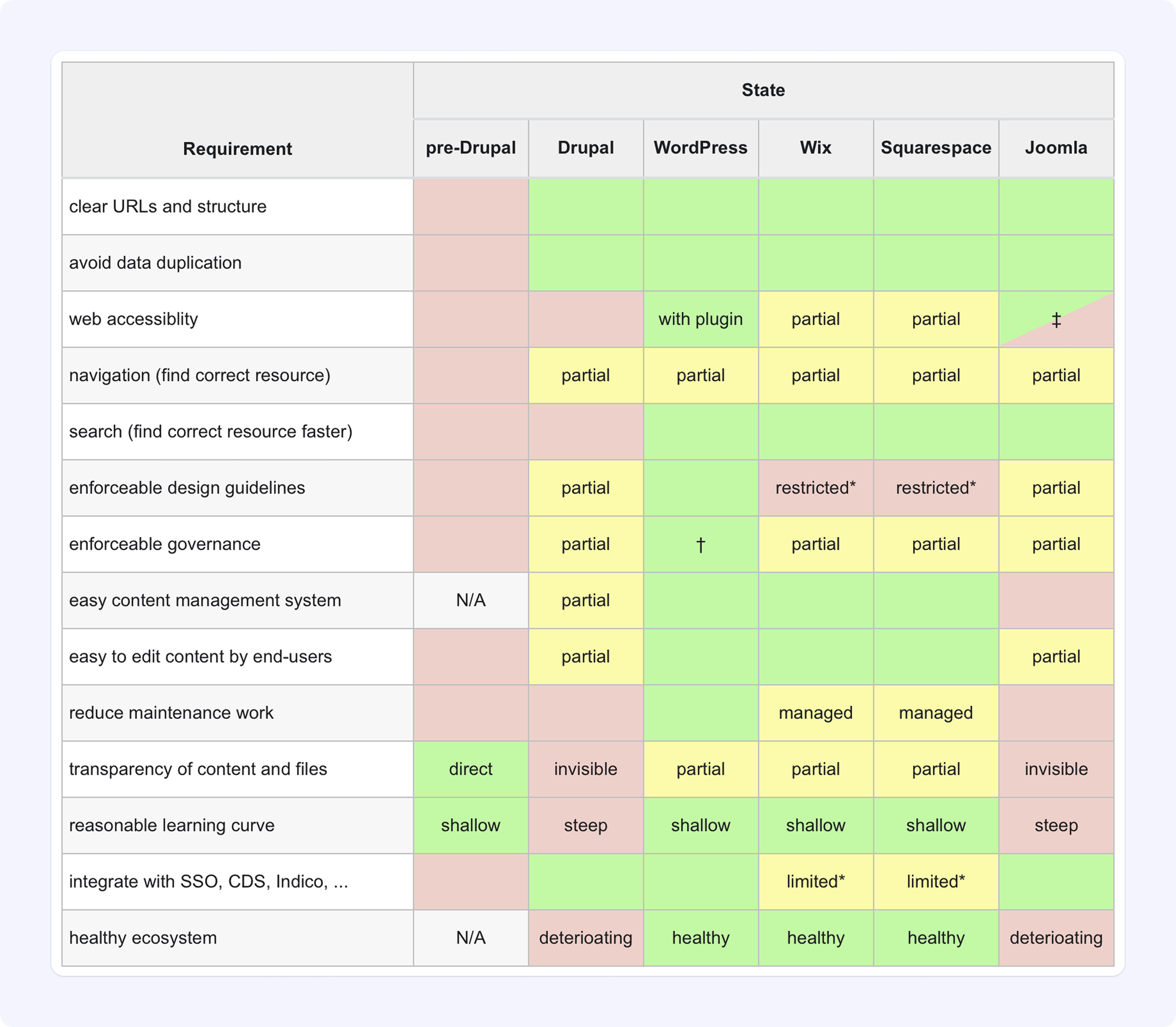
They assessed each platform against criteria ranging from accessibility and security to integration capabilities and ecosystem health.
WordPress won. Here's why:
Usability Over Complexity: WordPress offers a true WYSIWYG editor (Gutenberg) where content appears almost exactly as it will to end-users. No technical knowledge required. Researchers could finally publish without waiting for developers.
Healthy Ecosystem: While Drupal's ecosystem was deteriorating, WordPress has a massive, thriving community. Thousands of plugins. Continuous innovation. Strong backward compatibility.
Lower Total Cost of Ownership: No expensive licensing fees. Lower maintenance burden. Easier to find affordable talent. CERN could redirect resources from infrastructure maintenance to actual research.
Better Accessibility Out of the Box: WordPress made it easier to meet modern web accessibility standards (WCAG 2.1 AA) and ensure compliance with regulations like the European Accessibility Act.
Integration-Friendly: WordPress could connect seamlessly with CERN's critical systems—Single Sign-On (SSO), the CERN Document Server (CDS), Indico (event management), and more.
Proven at Scale: If NASA, the White House, and Sweden's official government site trust WordPress, it's more than ready for enterprise use.
According to CERN:
"The aim is to offer a modern, accessible, and responsive platform, which will be easier to maintain and evolve."
Translation? WordPress works better for everyone.
4 STRATEGIES THAT MADE THIS MIGRATION A SUCCESS
CERN's WordPress implementation wasn't just about moving content from point A to point B. It was a complete rethinking of their digital ecosystem.
Here are the four key strategies that made it work:
Strategy #1: Federated Governance Structure
Before migrating the technology, CERN fixed the governance problem.
In July 2023, they established a three-tier Web Governance Structure:
- Web Governance Board (strategic decisions)
- Web Presence Committee (oversight and coordination)
- Departmental Web Representatives (federated execution)
This structure ensured:
- Clear accountability at every level.
- Consistent standards across all 1,200+ websites.
- Streamlined decision-making for CMS selection and migration planning.
By solving governance first, CERN avoided the chaos that sinks most large-scale migrations.
Strategy #2: Moderation Model for Website Lifecycle
CERN introduced a smart moderation system to prevent orphaned, outdated, or insecure websites:
Official Websites (production sites like name.cern or dep-name.web.cern.ch):
- Web Representatives are notified upon creation.
- Removing SSO requires supervisor approval.
- Websites pass to hierarchy when owner leaves CERN.
Test Websites (development/staging sites like my-feature.web.cern.ch):
- Must stay behind SSO.
- Feature a non-removable banner indicating test status.
- Automatically purged after six months or when owner leaves.
- Can be promoted to Official status after approval.
This lifecycle management reduces security risks and ensures no website becomes abandoned.
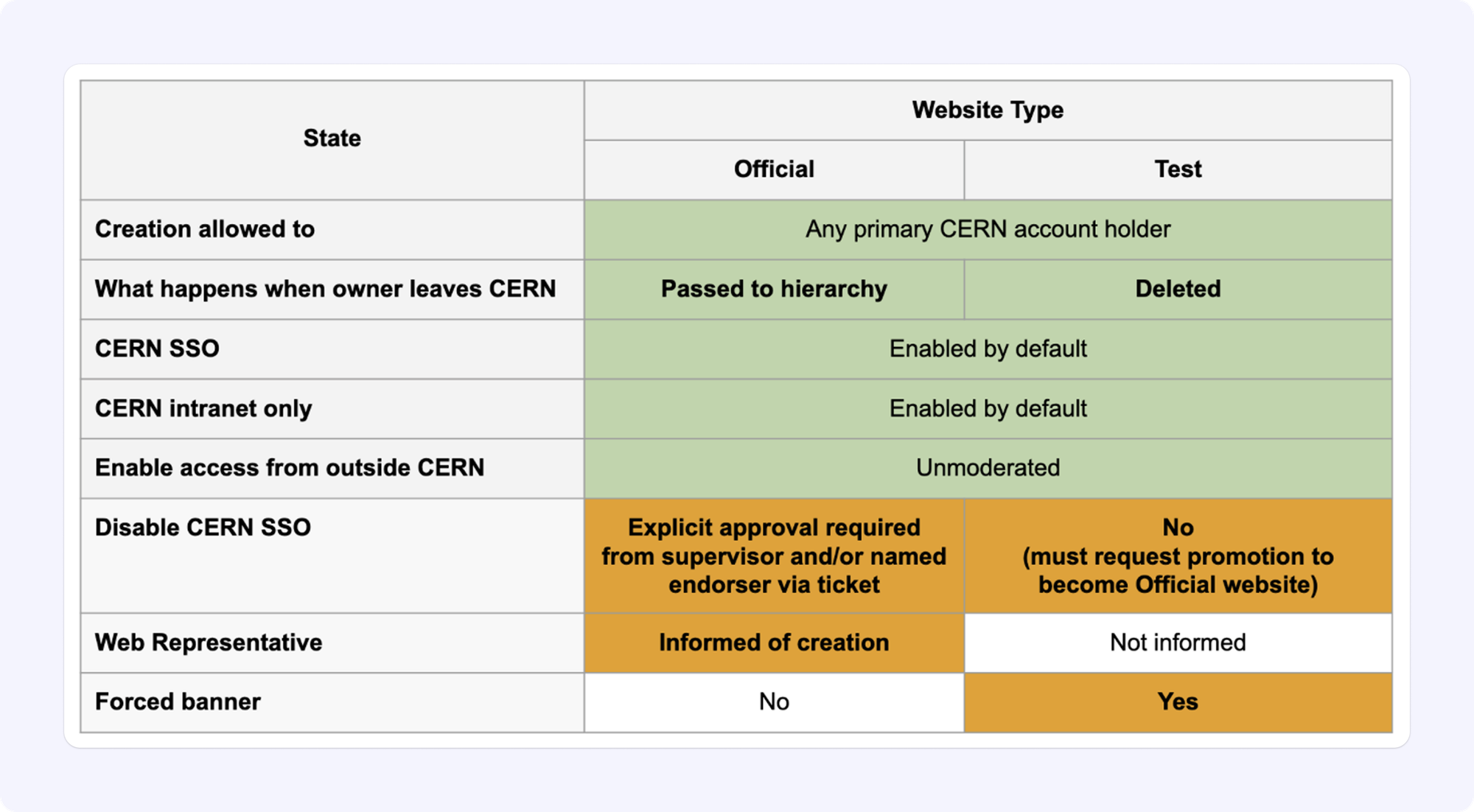
Strategy #3: Centralized WordPress Distribution
CERN created the CERN WordPress Theme and a curated plugin library—similar to how they managed Drupal, but simpler.
While not technically using WordPress Multisite, CERN built a multisite-esque infrastructure that allows centralized management of 1,200+ properties from a single control point, think of it as Multisite's enterprise cousin.
Key features:
- Centralized updates for WordPress core, themes, and plugins.
- Consistent design across all properties.
- Built-in accessibility and responsiveness.
- No ad-hoc plugin installation (requests evaluated centrally).
Users can't break things by installing random plugins. Everything is tested, approved, and maintained centrally.
This eliminates the customization nightmare that plagued Drupal.
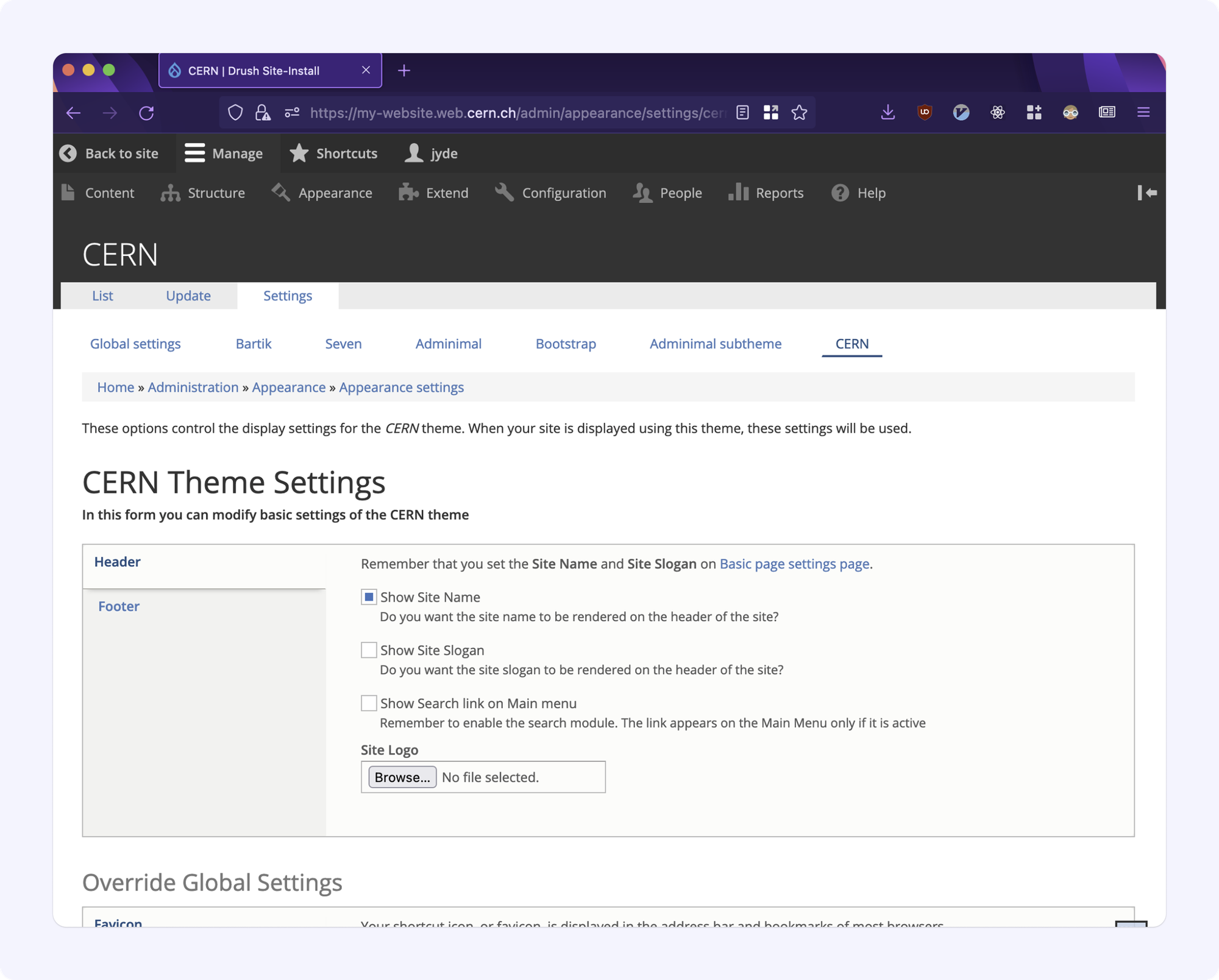
Strategy #4: Phased, Automated Migration
CERN didn't try to migrate everything overnight. They rolled out WordPress in phases:
October 2024: WordPress Lite (lightweight version for early adopters)
January 2025: WordPress MVP (internal testing)
March 2025: WordPress Pilot (select websites)
May 2025: General availability to all CERN users
July 2025: Automated migrations begin in batches
For the automated migration:
- Websites conforming to the CERN Drupal Distribution are migrated automatically.
- Customized websites must strip away customization to qualify.
- Website owners receive a WordPress preview to verify before going live.
- Original Drupal site stays online until owner approves the switch.
By mid-2026, Drupal will be fully decommissioned.
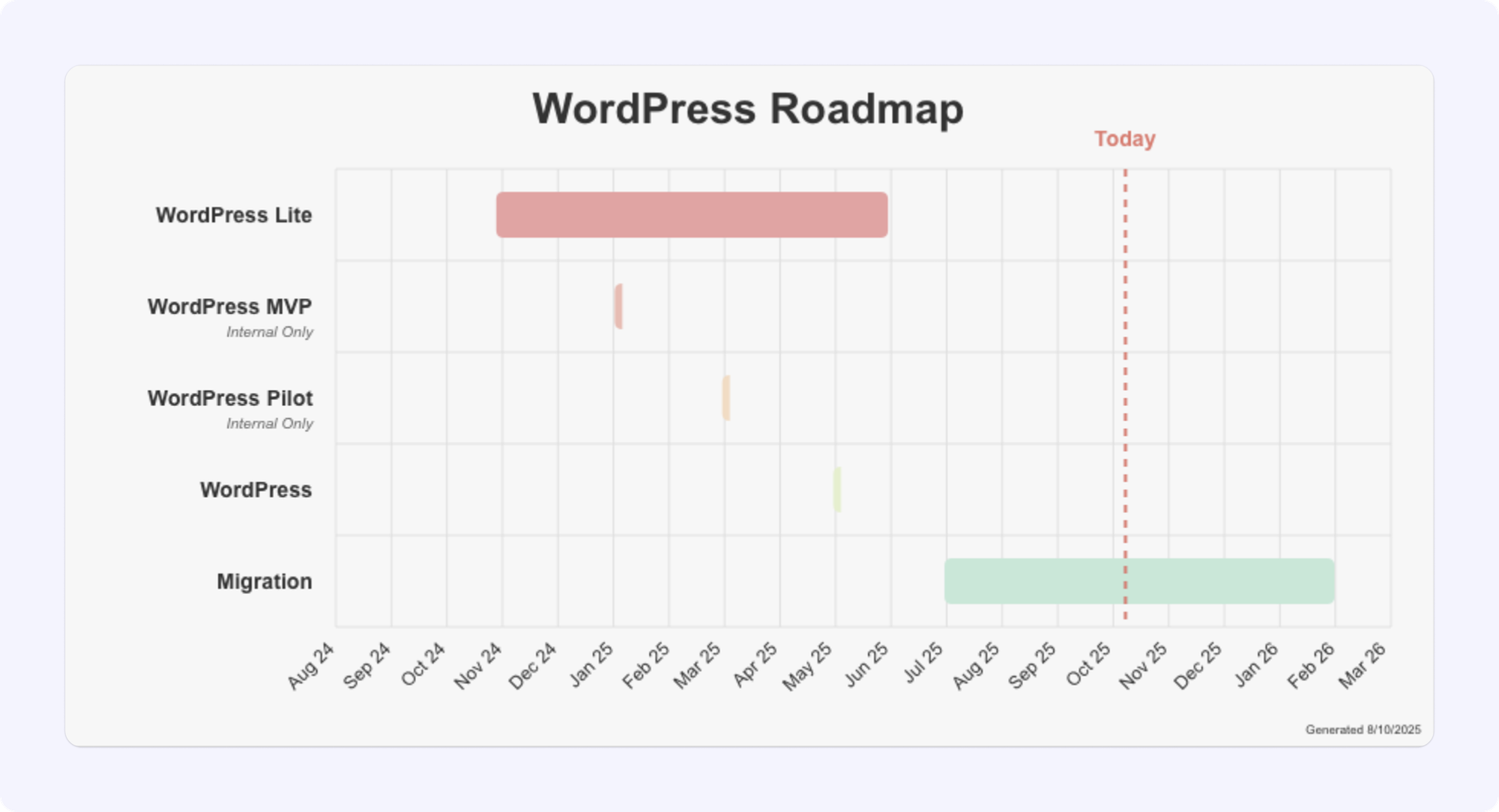
IMPRESSIVE RESULTS & KEY WINS
CERN's migration delivered results that exceeded expectations:
For Content Creators:
- Publishing time reduced dramatically—researchers can now update content without developer help.
- True WYSIWYG editing means what you see is what you get.
- Consistent, accessible design enforced automatically.
For IT Teams:
- Maintenance burden reduced significantly.
- Centralized updates eliminate compatibility nightmares.
- No more supporting 300+ unique custom modules.
For the Organization:
- Lower total cost of ownership.
- Better accessibility compliance (WCAG 2.1 AA).
- Modern, responsive design across all properties.
- Reduced security risk with centralized patch management.
The Numbers:
- 1,200+ websites migrated or rebuilt on WordPress.
- 53% of sites previously customized, now conforming to central standards.
- Migration cost far lower than continuing with Drupal long-term.
FINAL THOUGHTS
CERN's WordPress migration isn't just a technical upgrade.
It's a statement.
When the birthplace of the World Wide Web chooses WordPress, it validates what many enterprises already know:
WordPress is ready for mission-critical, global-scale deployments.
Key lessons for your enterprise:
✅ Fix governance before you fix technology.
✅ Centralize what matters (security, updates, standards).
✅ Empower users—reduce dependencies on developers.
✅ Phase your migration—don't rush it.
✅ Eliminate customization debt—standardize where possible.
✅ Choose platforms with healthy, growing ecosystems.
If CERN, with over 1,200 websites, thousands of users, and the highest stakes imaginable, can successfully migrate to WordPress, your organization probably can too.
WordPress isn't just for blogs anymore. It's for billion-dollar brands, government agencies, and yes, even the scientists who invented the web.
P.S. CERN actually reached out to Multidots about this migration in 2024. We were honored to submit a proposal, but they ultimately decided to handle the project internally with their IT and Web teams, which makes sense given their strict timelines and internal requirements. Still, it's awesome to see them bet big on WordPress.
Want the full story? CERN documented everything here. Worth a read if you're thinking about a similar migration.
BY THE WAY...
We just launched GreenPressWP.com, the world's smallest WordPress theme designed to minimize digital carbon footprint.

With sustainability becoming crucial for enterprise brands, this ultra-lightweight theme delivers blazing performance while reducing environmental impact. It's part of our commitment to making WordPress not just powerful, but responsible.
I'M WRITING A BOOK
I've been working on something special for over a year now—a comprehensive guide for tech leaders navigating the complexities of enterprise WordPress.
This book is written for CTOs, IT managers, and enterprise decision-makers who want to understand how WordPress powers billion-dollar businesses.
Drawing from over a decade with Fortune 500 companies, I'm sharing strategies and insider knowledge most agencies keep to themselves.
What you'll learn:
- Evaluating WordPress for enterprise-scale operations
- Migration strategies that minimize risk and maximize ROI
- Performance optimization for high-traffic sites
- Security frameworks for enterprise compliance
- Team management for large WordPress deployments
The book launches in the coming months, and I'm offering free advance copies to newsletter subscribers.
Interested in a free copy? Sign up for the book launch here.

👋 Until next time, Anil | CEO and Co-Founder → Multidots, Multicollab & Dotstore.
P.S. I also write about personal growth and agency growth.

WP for ENTERPRISES is brought to you by Multidots, an enterprise WordPress web agency that’s been empowering big enterprises to scale and succeed with WordPress.

Whenever you're ready (no pressure), there are four ways we can help:
#1: Enterprise WordPress consulting – Think of us as your WordPress GPS. We’ll get you where you need to go.
#2: Migrate your website to WordPress – No stress, no mess—just a smooth ride to the WP world.
#3: Designing and building a new site – Your dream site, minus the nightmares.
#4: Optimizing and maintaining your site – Because nobody likes a slow website (or a hangry one).
📆 Book a quick, free call—no hassle, no commitment, just solutions that work for you.
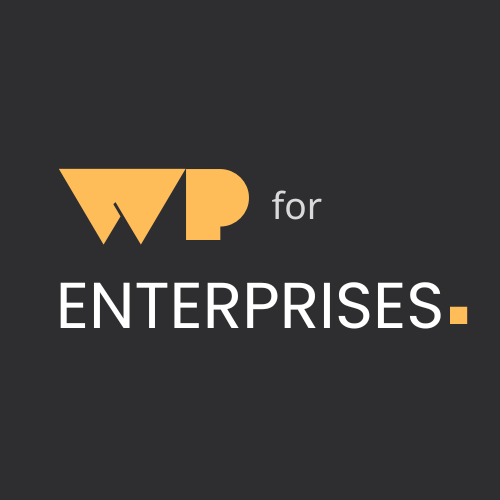
Member discussion